Visualising sound 06
Dynamic range diagrams
- Video
- Script
Welcome to this tutorial on Dynamic Range diagrams.
The dynamic range diagram can be used for several purposes including showing ..
- the range of volumes, between the quietest and loudest, that an instrument or an audio device can produce
- the range of volumes, between the quietest and loudest, that an audio device can accommodate
- the relationship between the unwanted noise and the wanted audio signal in an audio device or system
The dynamic range diagram has no time axis, and simply shows amplitude.
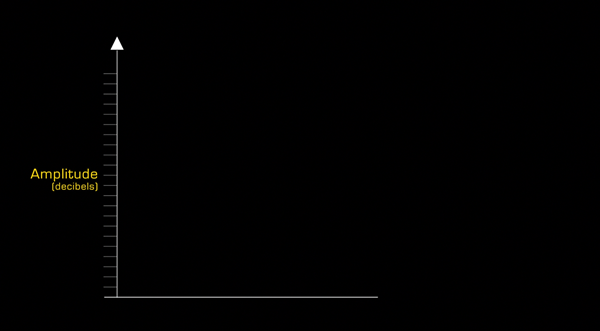
At the bottom is silence, or the theoretical lower limit of human hearing, at 0 decibels.
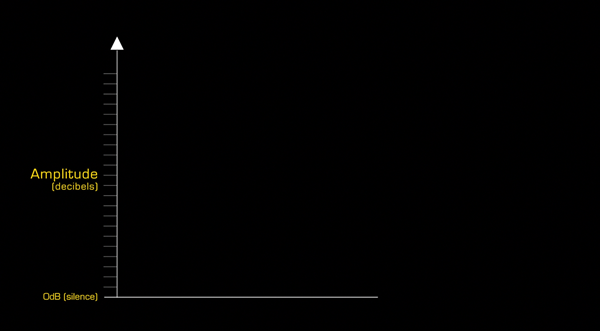
Above the noise floor, there may be a horizontal line that shows a reference level for measuring the relationship between the unwanted noise and wanted signal, the so called "signal-to-noise ratio".
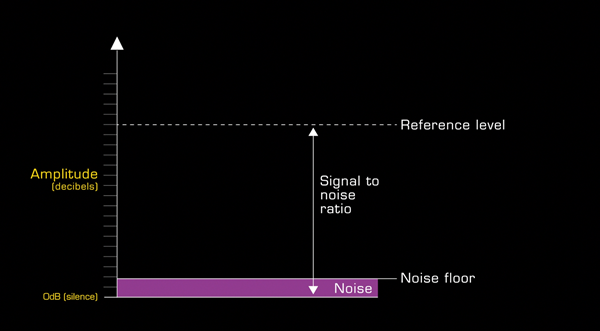
Above the reference level another horizontal line shows either the peak level that can be accommodated , or the peak level that can be produced. If the diagram is showing human hearing this will be the threshold of pain.
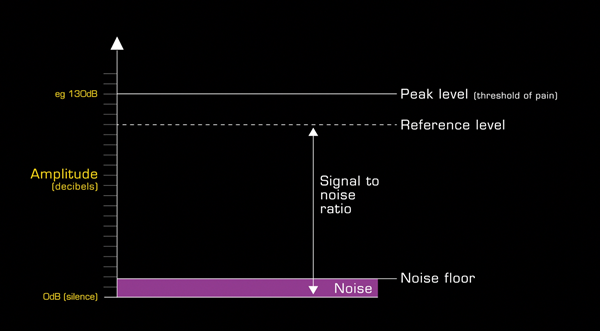
Between the reference level and peak level is an region known as headroom. This region represents s a safety margin where momentary peaks above the average reference level to be accommodated. This element of the diagram is commonly included in diagrams that represent dynamic range in analogue systems such as tape recorders and mixing desks.
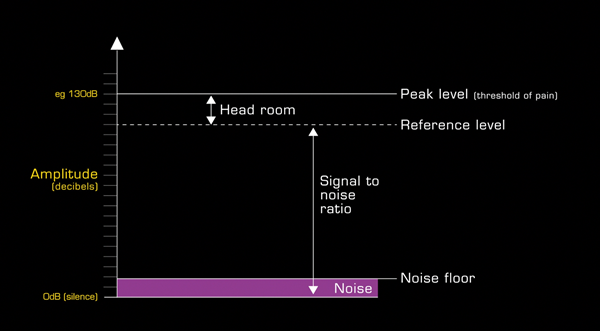
Above peak level is distortion and clipping and the danger area for human hearing damage.
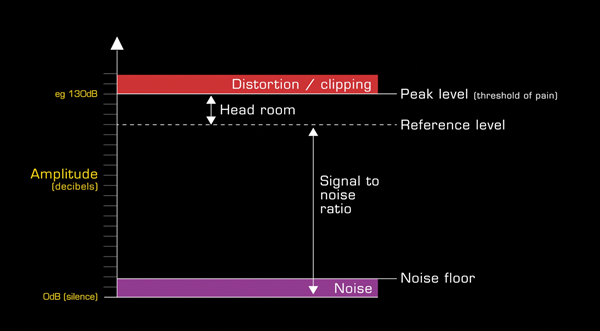
Another of our videos covers dynamic range concepts in detail.
Caption - Thanks for watching
The script for this video, with accompanying images, can be found at projectstudiohandbook.com
We suggest you subscribe at our YouTube channel, and join our mailing list at our website to receive notification of new videos, blog posts and subscriber only extras.
Thanks for watching.